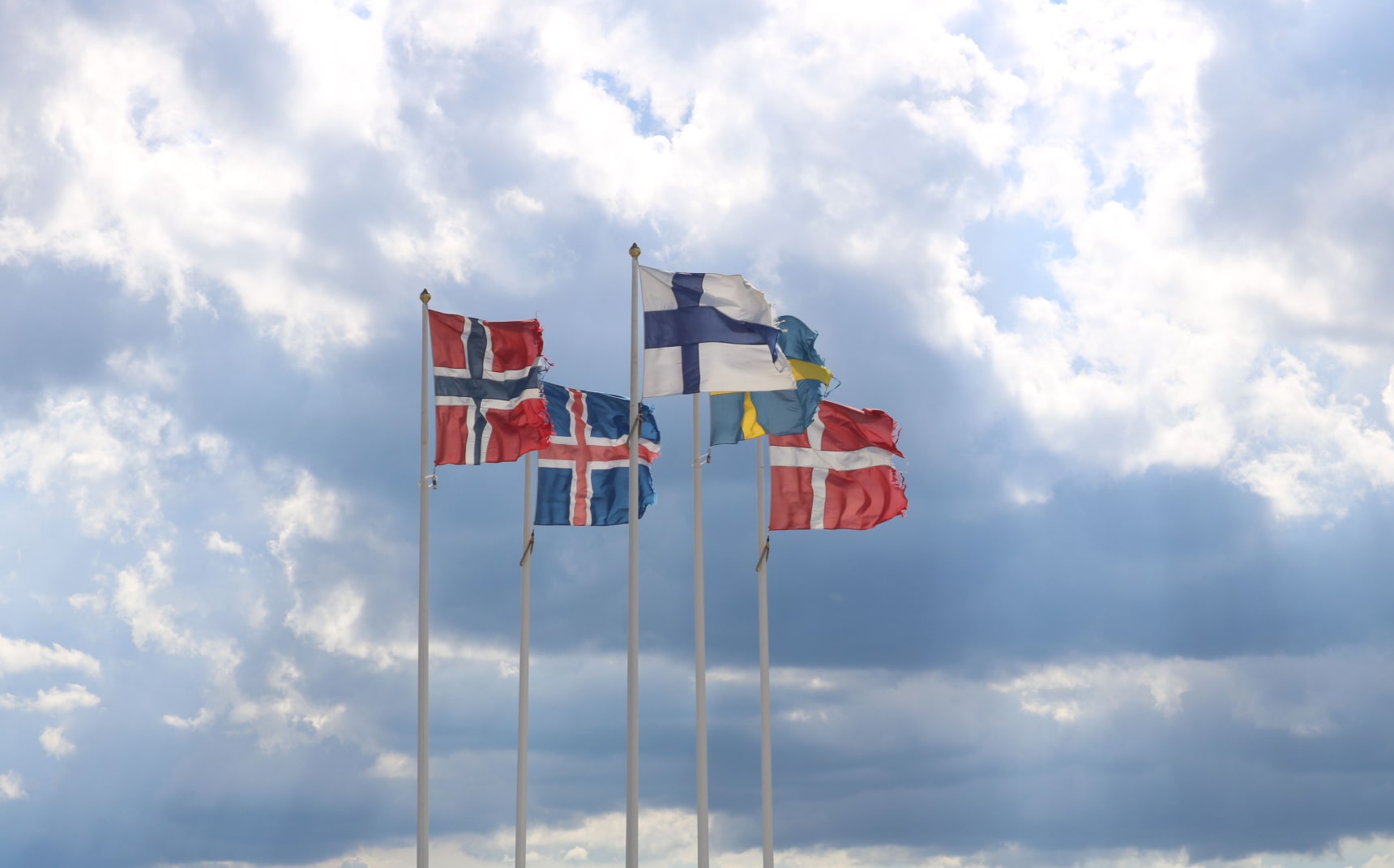The eCommerce world is growing faster than ever — but growth isn’t distributed evenly. Some countries and states have become clear leaders, offering stronger infrastructure, more favorable tax conditions, and consumers who are far more active online.
Understanding these geographic patterns helps entrepreneurs decide where to start, buy, or scale their online business. While digital commerce can technically happen anywhere, location still shapes opportunity — from delivery speed to market access and even consumer trust.
Below is a data-driven yet practical look at where the world’s most profitable online stores are located and why these regions matter more than ever.
Biggest eCommerce Markets in the World
China Dominates Global Online Commerce

Over 80% of the Chinese population regularly shops online. Platforms like Alibaba, JD.com, and Pinduoduo turn social engagement into shopping activity, blurring the lines between entertainment and commerce. Integrated payments through Alipay and WeChat Pay make transactions instant and effortless.
For international businesses, China represents vast opportunity but also complexity. Local regulations, cultural nuance, and fierce competition make entry challenging — yet the potential for long-term growth remains unmatched.
United States: Mature, Competitive, and Rewarding

The U.S. market benefits from standardized payments, high consumer trust, and established logistics networks that reach virtually every ZIP code. Purchasing power remains strong, supporting both budget and premium retail strategies.
Inside the country, several states stand out. California, Texas, Florida, and New York account for a large portion of total eCommerce revenue. California’s tech-driven economy and fulfillment hubs make it ideal for scaling operations. Texas and Florida, with no state income tax and central shipping routes, are among the best states to start an eCommerce business today.
United Kingdom: The European Leader

British consumers appreciate convenience, transparent pricing, and fast delivery. The UK’s compact geography enables affordable, quick logistics, while its advanced payment systems make checkout frictionless. Despite post-Brexit changes, the UK remains one of the best international markets for stable online growth and cross-border expansion.
Japan and South Korea: Sophisticated Digital Retail

South Korea, with roughly $120 billion in annual sales, ranks among the most digitally advanced markets worldwide. Nearly one-third of all retail transactions happen online, most via mobile. Local giants like Coupang have set world-class standards for same-day delivery and service innovation.
Both countries illustrate how culture, technology, and consumer expectations can shape the future of online retail far beyond national borders.
Fastest Growing eCommerce Markets
Southeast Asian Markets Lead Growth Rates

Indonesia represents a particularly compelling opportunity. With over 270 million people and rapidly improving digital infrastructure, online sales growth consistently exceeds 20% annually. The market remains relatively underserved compared to its potential, creating opportunities for businesses that can navigate logistics challenges in an archipelago nation spanning thousands of islands.
Vietnam shows similar patterns with annual eCommerce growth rates approaching 25%. The country’s young, tech-savvy population embraces online shopping enthusiastically as income levels rise and logistics improve. Government initiatives supporting digital commerce create favorable conditions for market expansion.
India’s Expanding Digital Frontier

Challenges such as regional logistics, multiple languages, and diverse payment preferences persist, yet local giants Flipkart and Amazon India have proven that sustainable growth is achievable. Early movers can still capture market share before the space becomes fully saturated.
Latin America’s Acceleration

These countries remain infrastructure-challenged in places but represent high-potential eCommerce markets for brands ready to adapt to local realities.
Top Countries for eCommerce Penetration
The United Kingdom: A Digital Retail Powerhouse

This maturity creates stability: consumer behavior is predictable, logistics are streamlined, and the ecosystem supports continuous innovation in customer experience.
South Korea: Mobile-First by Design

China: Social Commerce at Scale

It’s a reminder that eCommerce growth doesn’t just depend on infrastructure — it also evolves through innovation in how people interact online.
The Nordic Model: Sustainable and Digital

Nordic markets tend to value sustainability, transparency, and quality over low prices. Businesses succeeding in these markets often emphasize product quality, ethical sourcing, and environmental considerations. The relatively small populations mean these markets work best as part of broader European strategies rather than standalone opportunities.
Total Stores by Region
United States Concentrates Operations in Key States

Texas attracts eCommerce operations through favorable tax policies, central geographic position enabling efficient shipping to most US markets, and business-friendly regulations. Florida offers similar advantages with no state income tax, strong logistics infrastructure, and growing population. These states consistently rank among the best locations to start and operate eCommerce businesses.
Delaware and Nevada remain popular for business registration due to favorable corporate laws, though actual operations often occur elsewhere. The ability to register in one state while operating from another provides flexibility in optimizing tax and legal structures.
Europe: Logistics-Driven Expansion
European eCommerce hubs cluster where infrastructure meets accessibility. The Netherlands (Rotterdam, Amsterdam) serves as the continent’s logistics heart, connecting global suppliers to European buyers. Germany offers a massive domestic market, while Poland has become a cost-efficient fulfillment center for EU operations.
Many cross-border retailers combine multiple hubs — for example, warehouses in Poland with marketing teams in the UK — to balance tax efficiency and delivery speed.
Asia: Urban Ecosystems of Commerce
Across Asia, eCommerce thrives in cities that blend connectivity and scale. Singapore functions as Southeast Asia’s logistics hub, offering political stability and world-class infrastructure. Seoul, Tokyo, Hong Kong, Shenzhen, and Guangzhou anchor regional operations, supported by advanced ports, manufacturing bases, and digital ecosystems.
These cities form the backbone of Asia’s trillion-dollar online commerce network — where innovation and efficiency converge.
Understanding What Geographic Trends Mean for Your Business
Location Flexibility in Digital Commerce
The geographic concentration of eCommerce businesses doesn’t mean you must operate from specific locations to succeed. The beauty of online commerce lies in its location flexibility. A store serving UK customers can be managed from Spain. A business selling to Americans can operate from Portugal or Thailand.
What matters more than your physical location is understanding your target market geography. Successful eCommerce businesses think carefully about where their customers are located, where their products ship from, and how geography affects logistics costs and delivery times.
Offiro stores operate on Sellvia’s infrastructure, which handles the geographic complexity of eCommerce operations. The platform manages supplier relationships, shipping logistics, and technical infrastructure, allowing you to focus on serving customers regardless of where you’re physically located.
Taxes, States, and Smart Compliance
Geographic decisions still carry practical weight. In the U.S., states like Florida and Texas offer tax advantages and simpler regulations, while California and New York provide access to massive consumer markets. Understanding nexus — the connection between your store and a state’s tax obligations — helps maintain compliance.
Internationally, VAT, customs, and cross-border rules vary by region. Choosing where to register and operate can significantly affect margins and scalability. Smart eCommerce owners optimize both convenience and compliance.
The Future of eCommerce Is Everywhere

Every thriving online business is built on one essential idea: knowing where opportunity lives. From California’s innovation corridors to Southeast Asia’s booming digital streets, the most profitable eCommerce stores don’t just sell products — they understand their markets, cultures, and customers better than anyone else.
The map of global commerce is changing fast. New regions rise, consumer habits shift, and digital platforms rewrite what it means to build a business. Yet one truth remains: location still shapes success. The right market can turn a small store into a lasting brand.
Offiro helps you start exactly there — at the intersection of data, demand, and opportunity. Every store listed on Offiro is verified, profitable, and ready to operate on Sellvia’s trusted infrastructure. You don’t need to guess where growth happens — you can step directly into it.
Start where others have already proven success.
Expand across borders, not just boundaries.
Because in eCommerce, the world isn’t divided by geography anymore — it’s connected by growth.
Ready to explore profitable eCommerce opportunities across markets? Browse
Offiro’s verified listings of established online stores serving different geographic markets. Each listing includes complete financial transparency, proven operations, and infrastructure already positioned for success. Start your 14-day trial to experience how established stores operate in their target markets before making your investment decision.

















